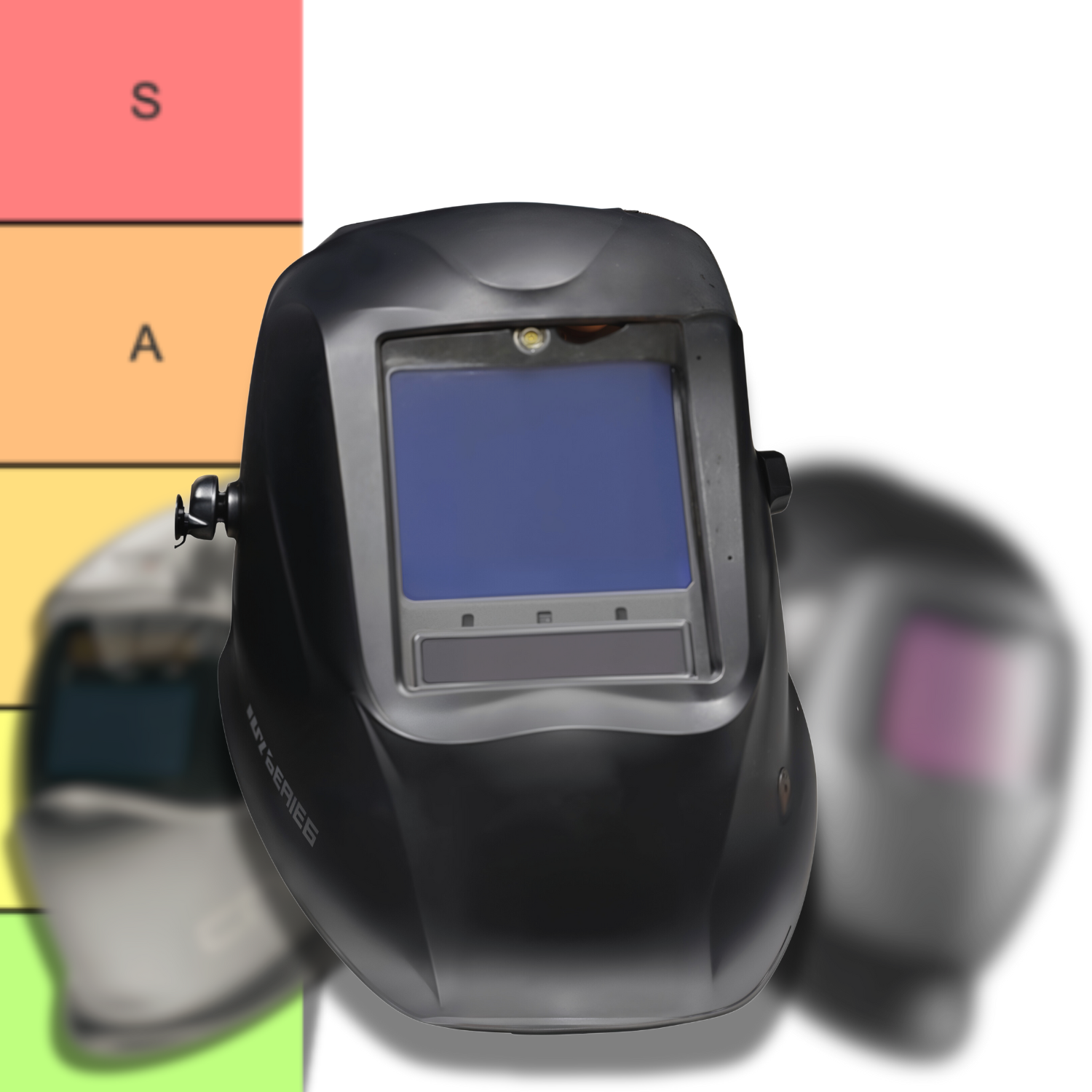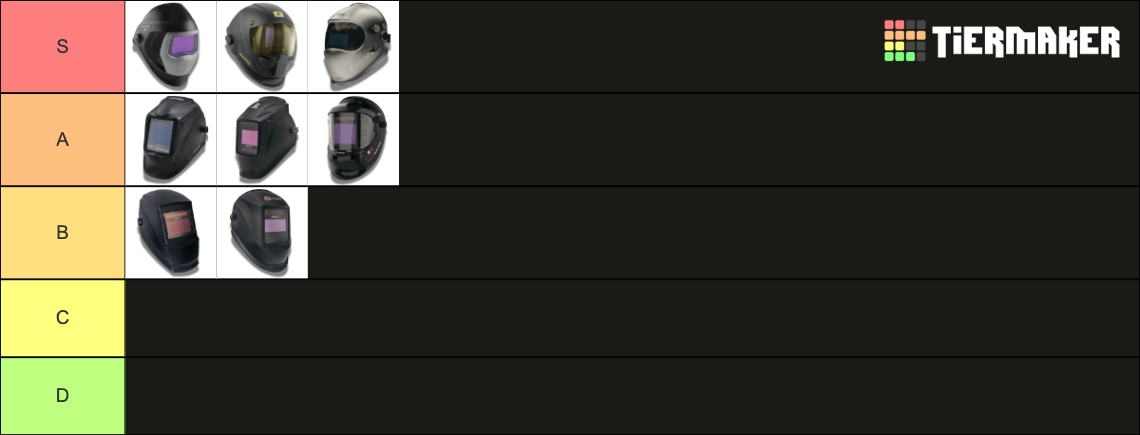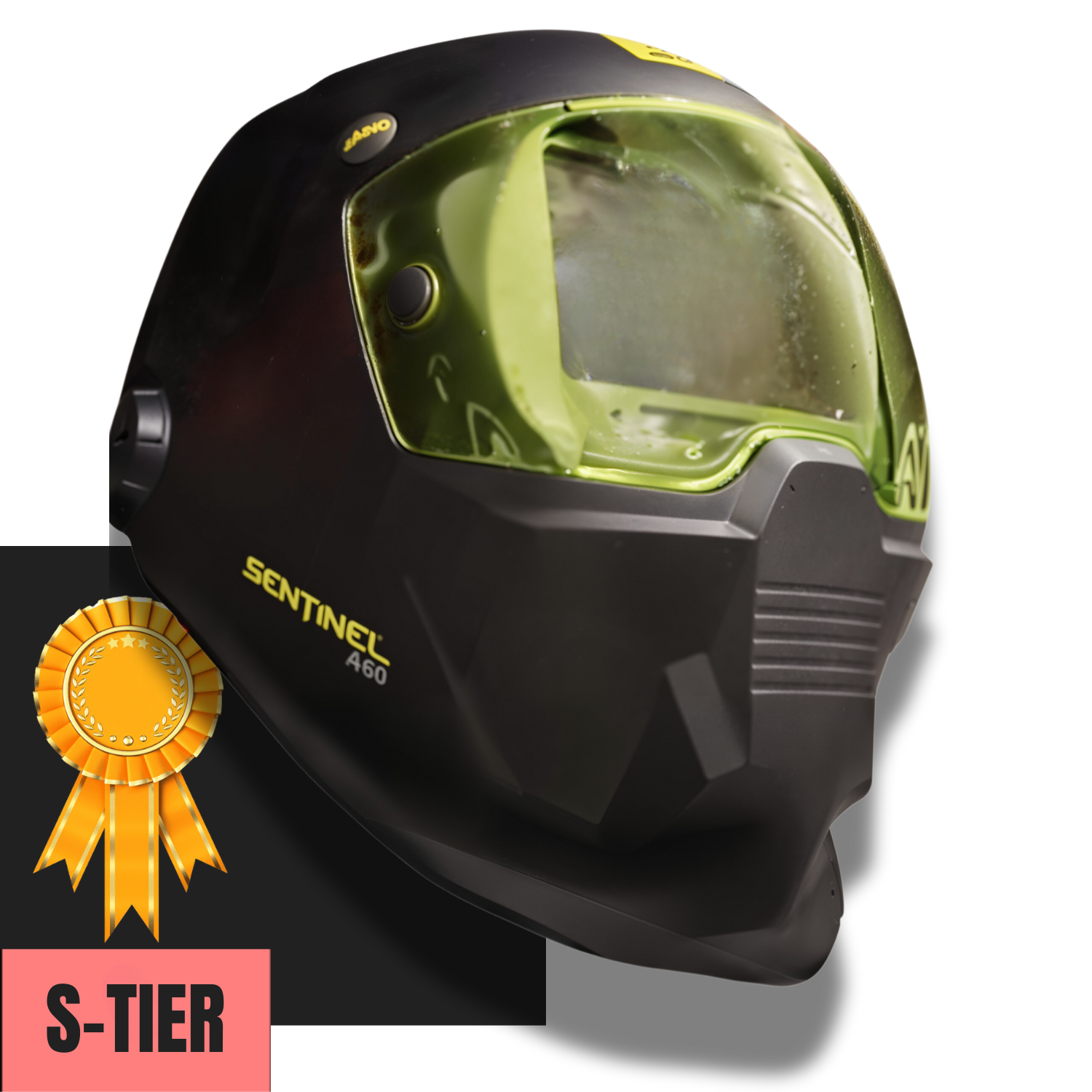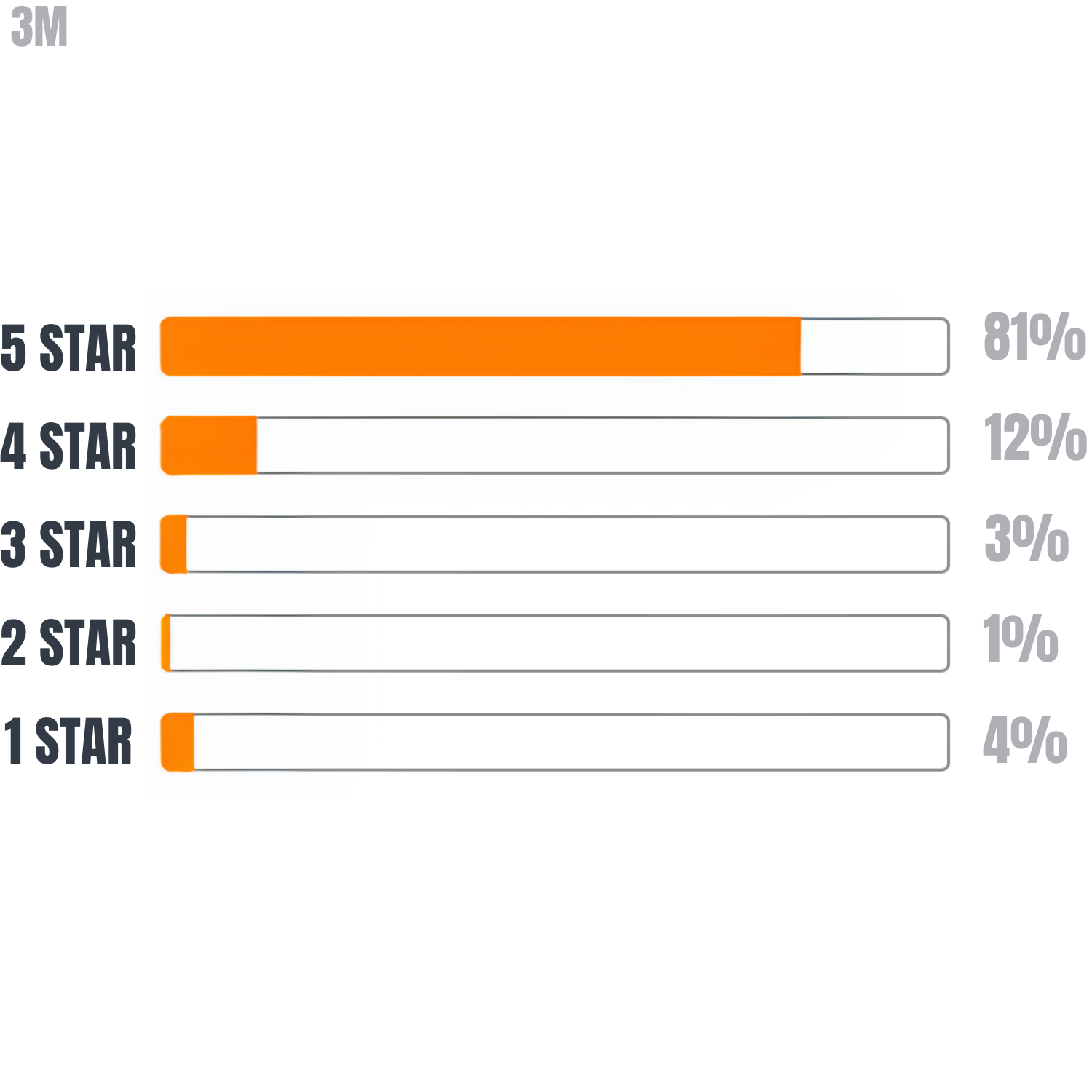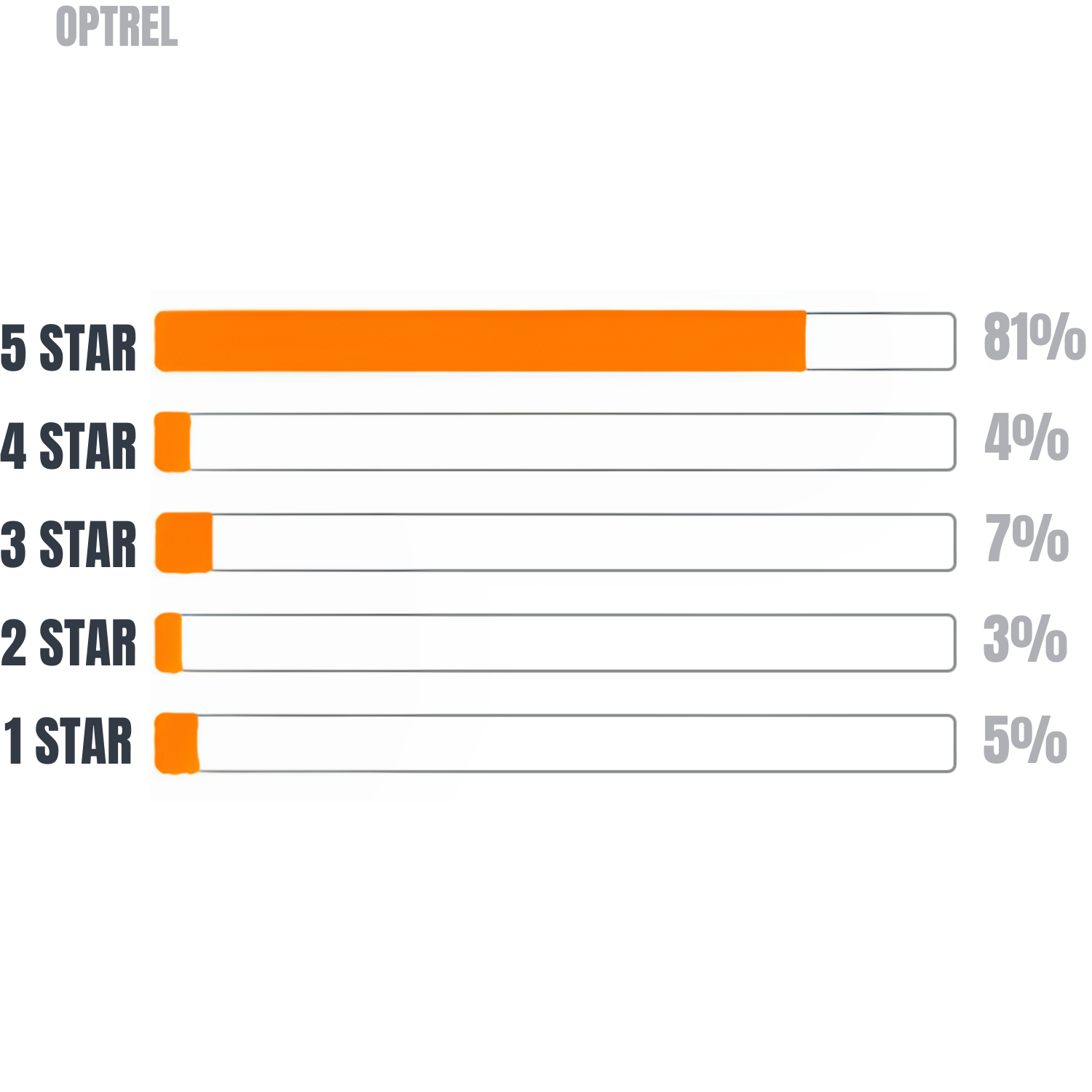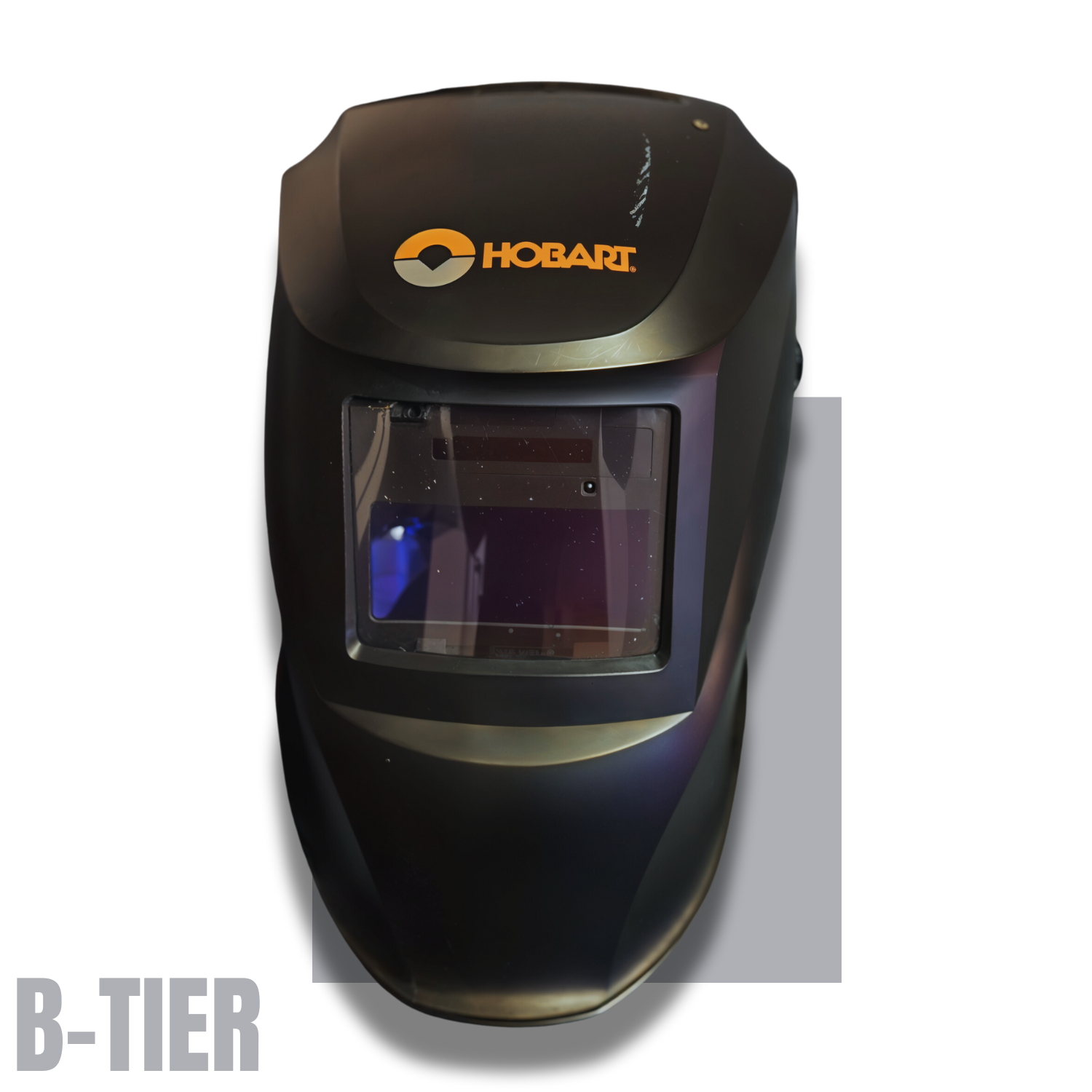Best Welding Helmet: 2025 Tier List
Looking for the best welding helmet? Whether you’re on a budget or want all the bells and whistles, our guide to the top welding helmets of 2025 will help you find what you need. We rate helmets on price, comfort, clarity and more. It's crucial to consider welding safety when choosing a helmet.
Best Welding Helmets 2025
Wading through the ocean of welding helmets is a nightmare, but don’t worry! We’ve done the work for you. Here are the best welding helmets of 2025 from top brands, each good at something:
Best for Budget: YesWelder True View Welding Helmet
Best for Features: ESAB Sentinel A60
Best Viewing Area: Lincoln Electric Viking 3350 with True Color Technology for clear weld puddle visibility
Best Comfort: 3M Speedglas 9100XXi
Best Clarity: Optrel Crystal 2.0
Best Overall: Miller Digital Elite
Best for Beginners: Hobart Inventor
Best Entry Level Auto-Darkening: Antra Digital Pro DP9
When choosing a welding helmet, consider factors like lens quality, optical clarity, and eye protection.
ESAB Sentinel A60
This helmet is considered S-tier by users for its clarity, comfort, and ergonomic design. People love how clear the view is and how well it fits their heads, calling it the best helmet they've ever used.
Specifications:
Excellent optical clarity
Shade adjustable in 0.5 increments
9 ADF memory settings
Pros:
Excellent optical clarity
Precise shade adjustments
Comfortable headgear with ergonomic design for reduced neck strain
Cons:
Slightly heavier than the previous model
Expensive
If you want all the extras the ESAB Sentinel A60 is your helmet. This helmet has excellent optical clarity and adjustable shade in 0.5 increments. 9 ADF memory settings so you can fine tune your gear with advanced ADF lens technology. 13.02 square inches viewing area so you won’t miss a thing.
The headgear is well balanced so no neck strain during marathon welding sessions. The Halo headgear makes long term use a breeze. Only downside is it’s a bit heavier than the previous model but that’s a small price to pay for the advanced features. Plus ESAB’s 100 day satisfaction guarantee and 3 year warranty so you can’t go wrong.
Rating:
Price: 4/5
Design: 4/5
Comfort: 4/5
Functionality: 5/5
3M Speedglas 9100XXi
Specifications:
Shade range DIN 5-13
Weight: 1.345 lbs
Pros:
Best optical clarity
Large viewing area
Side windows
Best optical clarity and ergonomic design for long-term comfort
Cons:
Heavy
Needs to be adjusted just right for comfort
When it comes to comfort the 3M Speedglas 9100XXi is the king. Known for it’s heavy rugged design and easy to use controls this helmet has a shade range of DIN 5-13 so it’s good for all welding applications. Despite the 1.345 lbs weight users love the helmet’s best optical clarity and large viewing area.
But it needs to be adjusted just right for comfort which can be a bit of a pain. But once you get it right the comfort is unbeatable. The side windows are a bonus too for additional visibility. If you’re willing to invest in your comfort the 3M Speedglas 9100XXi is worth it.
Rating:
Price: 3/5
Design: 4/5
Comfort: 5/5
Functionality: 4/5
Optrel Crystal 2.0
Specifications:
Crystal Lens Technology 2.0
Light weight design
Pros:
Best optical clarity with True Color Technology for a crystal clear view
Light weight
Enhances welding experience
Cons: Premium price
The Optrel Crystal 2.0 is the Ferrari of welding helmets when it comes to clarity. With Crystal Lens Technology 2.0 this helmet gives welders crystal clear view so you can see your work in detail. Users love the crystal clear view and light weight design which makes the welding experience even better.
Despite the premium price many welders think it’s worth the investment for the clarity and comfort it gives. If seeing is believing then the Optrel Crystal 2.0 will make you a true believer in the magic of best optical clarity.
Rating:
Price: 3/5
Design: 5/5
Comfort: 4/5
Functionality: 5/5
Lincoln Electric Viking 3350
Specifications:
Large viewing area
True color lens
1/1/1/1 optical clarity
Pros:
Excellent visibility
Durable
True color lens for clear weld puddle visibility
Reduces eye strain
Cons:
Slightly heavier
Side windows may not be for everyone
If visibility is your top priority the Lincoln Electric Viking 3350 is the welding helmet. This helmet has an extra-large viewing area and unique side windows for additional peripheral vision, featuring True Color Technology for clear weld puddle visibility. True color lens and 1/1/1/1 optical clarity so you see your work in the best possible light reduces eye strain.
Users love the visibility and durability so it’s a top choice for those who want a clear view. Only downside is it’s slightly heavier and the side windows may not be for everyone. But if you can get past those minor drawbacks the Lincoln Electric Viking 3350 is a great helmet for those who want to see everything.
Rating:
Price: 4/5
Design: 4/5
Comfort: 3/5
Functionality: 5/5
Miller Digital Elite
Specifications:
ClearLight 2.0 technology
X-MODE to block ambient light
Shade range DIN 2.5-5-13
Pros:
Great lens technology
Durable
Versatile shade range
Cons:
Headgear may not be as snug
Mid range price
The Miller Digital Elite is the perfect balance of performance and price so it’s a go to for many experienced welders. With ClearLight 2.0 technology visibility is improved so you can see the weld puddle clearer. Features like X-MODE to block ambient light make it even clearer during welding and it’s very versatile with a shade range of DIN 2.5-5-13.
But comfort wise the headgear may not be as snug which can affect long term usability. Despite that the Miller Digital Elite is known for great lens technology and durable construction so it’s good for serious welders. If you want a helmet that performs overall good without breaking the bank then this is your best bet.
Rating:
Price: 4/5
Design: 4/5
Comfort: 3/5
Functionality: 5/5
Hobart Inventor
Specifications:
9.3 square inch auto darkening lens with PureColor
Weight: 1.25 lbs
Pros:
Light weight
User friendly features
Budget
Lightweight with ergonomic design for long-term comfort
Cons:
Basic features
Less viewing area compared to top competitors
The Hobart Inventor is the perfect helmet for beginners getting into welding. With 9.3 square inch auto darkening lens with PureColor technology it’s user friendly. Weighs only 1.25 lbs so it’s light weight for long term wear.
But it has basic features and less viewing area compared to top competitors. Despite that it’s budget and user friendly so it’s a great starting point for newbies. If you’re just starting out the Hobart Inventor will suffice for you without overwhelming you.
Rating:
Price: 5/5
Design: 3/5
Comfort: 4/5
Functionality: 3/5
Antra Digital Pro DP9
Specifications:
High optical clarity and visibility
Wide shade range
12.46 inch viewing area
Pros:
Budget
Light weight
Analog controls
Cons:
Basic design
Limited advanced features
For newbies to auto darkening the Antra Digital Pro DP9 is an affordable entry point. It is light weight and has easy analog controls so it’s user friendly for beginners. It has high optical clarity and visibility so welders can see clearly while working.
Despite the basic design and limited advanced features the Antra Digital Pro DP9 has wide shade range and 12.46 inch viewing area to protect against glare, heat and spatter. If you’re looking for a reliable entry level auto darkening welding helmet this one won’t let you down.
Rating:
Price: 5/5
Design: 3/5
Comfort: 4/5
Functionality: 4/5
YesWelder True View
Specifications:
Panoramic view with 3 screens
1/1/1/2 optical clarity
6 auto-darkening sensors
Pros:
Very cheap
Suitable for all welding types (TIG, MIG, MMA, plasma cutting, grinding)
Reliable with 6 auto-darkening sensors
Includes grinding mode for seamless task transitions
Versatile for various welding applications
Cons:
Can get very dark even in its lightest state which might be too much for some users who want a quicker transition to light state for better visibility between welds
Not the lightest helmet on the market
The YesWelder True View Welding Helmet is a lifesaver for us who want a reliable helmet without having to sell a kidney. This helmet has panoramic view with 3 screens, so you can see what you’re doing while creating sparks. 1/1/1/2 optical clarity so you can see your work clearly and 6 auto-darkening sensors so you won’t be left in the dark—literally. It also features a grinding mode, allowing you to maintain visibility without removing the helmet. Not the lightest helmet around but still wearable for extended use.
But it has its flaws. The helmet can get very dark even in its lightest state which might be too much for some users who want a quicker transition to light state for better visibility between welds. Despite that minor issue the YesWelder True View is a great option for hobbyists and budget welders who want good features without the price tag.
Rating:
Price: 5/5
Design: 3/5
Comfort: 3/5
Functionality: 4/5
Choosing the Right Welding Helmet
Choosing the right welding helmet is crucial for ensuring the safety and comfort of welders. With so many options available in the market, it can be overwhelming to select the best one. Here are some key factors to consider when choosing a welding helmet:
Auto-Darkening Technology: Look for a helmet with advanced auto-darkening technology that can adjust the shade level automatically, providing superior optical clarity and reducing eye strain. This feature is essential for protecting your eyes from the intense light of the welding arc.
Viewing Area: A larger viewing area can provide better visibility and precision, but it’s essential to ensure that the helmet fits comfortably and doesn’t obstruct your view. Helmets like the Lincoln Electric Viking 3350 offer an expansive viewing area, making it easier to monitor your welds.
Shade Range: Choose a helmet with a wide shade range (DIN 3-13) to accommodate different welding tasks and applications. This flexibility allows you to switch between various welding processes without needing multiple helmets.
Comfort and Fit: Opt for a helmet with adjustable headgear and a comfortable design to reduce fatigue and ensure a secure fit. Helmets like the 3M Speedglas 9100XXi are known for their ergonomic design, making long welding sessions more bearable.
Brand Reputation: Consider top brands like Lincoln Electric, Miller Electric, Optrel, and Speedglas, which offer high-quality welding helmets with advanced features. These brands have a proven track record of reliability and performance.
Safety Certifications: Ensure that the helmet meets safety standards such as ANSI Z87.1-2010 and EN 379 for auto-darkening filters. These certifications guarantee that the helmet provides adequate protection against the hazards of welding.
Additional Features: Consider features like grind mode, plasma cutting, and fixed shade options, depending on your specific welding needs. Advanced features can enhance your welding experience and make your work more efficient.
By considering these factors, you can choose a welding helmet that meets your needs and ensures a safe and comfortable welding experience.
What to Consider When Choosing a Welding Helmet
Choosing the right welding helmet is more than just looks. Comfort and fit is important for long term use. Adjustable headgear and light weight design can reduce strain during long welding sessions. A bigger viewing area like the 13.02 square inch of the ESAB Sentinel A60 will give you more visibility and better monitoring of your weld quality.
Fixed shade helmets only have one shade of lens so they are good for basic welding tasks. Auto darkening helmets have adjustable shade options for more safety and efficiency. Auto darkening technology like the Lincoln Electric Viking 3350 gives more visibility and faster transition from light to dark which is needed for different welding tasks. Following safety standards like lens clarity rating will protect and encourage consistent helmet use. True Color Technology enhances visibility by providing a more natural view of the weld area.
Additional features like solar powered batteries will make it more user friendly and convenient.
Auto Darkening Technology
Auto darkening technology changes welding by allowing auto darkening welding helmets to auto darkening to changes in light. This technology is superior to passive helmets. The reaction time of auto darkening technology in welding helmets is in a fraction of a millisecond which is critical for protection and comfort of the welder’s eyes.
Sensitivity control allows you to adjust how fast the helmet reacts to the welding arc’s bright light, from low for dark conditions to high for bright environments. Delay control allows you to adjust how long the auto darkening filter stays dark after the welding arc stops, longer for continuous welds and shorter for quick welds.
The quick auto darkening activates as soon as the arc is struck although some users noted limitations in lower darkening settings.
Lens Reaction Time, Sensitivity and Delay Controls
When choosing the right auto darkening welding helmet, understanding the importance of lens reaction time, sensitivity, and delay controls is key. These features work together to give welders optimal protection and comfort for a smooth and safe welding experience. True Color Technology provides a more natural view, reducing eye strain and improving weld quality.
Welding Helmet Lens and Shade Range
A welding helmet lens is more than just a piece of glass; it’s your first line of defense against the intense light and heat generated during welding. Made from specialized materials, these lenses block harmful ultraviolet (UV) and infrared (IR) radiation, ensuring your eyes stay protected.
The shade range of a welding helmet lens is crucial. Measured in DIN (Deutsches Institut für Normung) standards, it ranges from DIN 3 to DIN 13. The higher the DIN rating, the darker the shade. Auto-darkening welding helmets come with a variable shade range, allowing the lens to adjust to different brightness levels. This feature is a game-changer for welders who switch between various welding processes or work in different lighting conditions.
Common shade ranges include:
DIN 3-5: Ideal for low-amperage processes like TIG and MIG welding.
DIN 5-8: Perfect for medium-amperage tasks such as stick welding and flux-cored welding.
DIN 8-13: Best for high-amperage processes like arc welding and plasma cutting.
Choosing the right shade range is essential to minimize eye strain. A lens that’s too light can cause eye fatigue, while one that’s too dark can obscure your view of the work area. Auto-darkening welding helmets offer the flexibility to adjust the shade, providing optimal visibility and protection.
Welding Helmet Types
When it comes to welding helmets, one size doesn’t fit all. Different types of helmets cater to various needs and preferences, each with its unique features and benefits.
Auto-darkening Welding Helmets: These helmets are the Swiss Army knives of the welding world. With a variable shade range, they adjust to different brightness levels, making them perfect for welders who switch between processes or work in varying lighting conditions. Advanced technology ensures superior optical clarity and reduces eye strain.
Fixed-shade Welding Helmets: These helmets come with a fixed shade range, offering consistent protection. While they might lack the flexibility of auto-darkening helmets, they are often more budget-friendly and suitable for specific welding tasks.
Passive Welding Helmets: The old-school option, passive helmets rely on a fixed shade range without any electronic components. They are durable and less expensive but may not offer the same level of convenience and protection as their auto-darkening counterparts.
Active Welding Helmets: Equipped with electronic components, these helmets adjust the shade range in response to changes in the welding arc. They provide a higher level of flexibility and protection, making them a favorite among professional welders.
Top brands like Lincoln Electric, Miller Electric, Optrel, and Speedglas offer a range of welding helmets with advanced features such as superior optical clarity, grind mode, and ergonomic designs. When selecting a welding helmet, consider the type of welding process, the level of eye strain, and the required protection. Always choose a helmet that meets safety standards like ANSI Z87.1-2010 to ensure optimal safety and performance.
By understanding the different types of welding helmets and their features, you can make an informed decision that enhances your welding experience and keeps you safe.
Safety Features and Precautions
Welding helmets are designed to protect welders from the hazards of welding, including UV radiation, sparks, and hot metal splatter. Here are some essential safety features and precautions to consider:
Auto-Darkening Filter (ADF) Lens: The ADF lens is the most critical safety feature in a welding helmet. It automatically darkens to protect the eyes from the welding arc, ensuring that you have optimal visibility and protection at all times.
Light State: The light state of the helmet refers to the shade level when the welding arc is not present. Look for a helmet with a light state of DIN 3 or 4 for optimal visibility. This feature is particularly useful for tasks that require frequent inspection of the weld area.
Eye Strain: Eye strain can be a significant issue for welders. Look for a helmet with advanced features like auto-darkening technology and superior optical clarity to reduce eye strain. Helmets with True Color Technology, like the Optrel Crystal 2.0, provide a more natural view of the weld area, reducing fatigue.
Grind Mode: Grind mode is a feature that allows the helmet to be used for grinding applications. Ensure that the helmet has a grind mode option and follow the manufacturer’s instructions for use. This feature enhances efficiency by allowing you to switch between welding and grinding without removing the helmet.
Plasma Cutting: Plasma cutting requires a helmet with a high shade level (DIN 13 or 14). Ensure that the helmet is designed for plasma cutting and follow the manufacturer’s instructions for use. This ensures that your eyes are adequately protected from the intense light and heat generated during plasma cutting.
Fixed Shade: Fixed shade helmets are designed for specific welding tasks and applications. Ensure that the helmet is designed for your specific needs and follow the manufacturer’s instructions for use. While they may lack the flexibility of auto-darkening helmets, they provide consistent protection for specific tasks.
Regular Maintenance: Regular maintenance is essential to ensure the helmet continues to function properly. Follow the manufacturer’s instructions for cleaning and maintaining the helmet. This includes checking the ADF lens, replacing batteries, and ensuring that the headgear is in good condition.
By considering these factors and safety features, you can choose the right welding helmet for your needs and ensure a safe and comfortable welding experience. Remember, investing in a high-quality welding helmet is an investment in your safety and productivity.
Safety Standards and Certifications
Safety standards and certifications is the foundation of a reliable welding helmet. The ANSI Z87.1 standard is important because it ensures welding helmets will protect the eye and face even if the lens fails. Welding helmets must comply with safety standards like ANSI Z87.1 to prove its protective capability. An ergonomic design ensures that the helmet is comfortable to wear for extended periods, reducing fatigue and increasing productivity.
In the US, ANSI standards is enforced to ensure welders has optimal visibility and safety. Although European standards like EN 379 assess the light quality and optical clarity of welding helmets, it is not mandatory in the US. Side view ports is a good feature, it gives peripheral vision and safety while welding.
Comfort and Fit for Long Term Use
Comfort and fit is key for long term welding. 3M Speedglas 9100XXi for example is designed for comfort with an adjustable head size range of 6.25 to 8 inches. Lightweight helmets will reduce fatigue during long welding sessions. Well padded interiors and top straps will alleviate forehead pressure during extended use and overall comfort.
Adjustable headgear is a must to have a personalized and comfortable fit. ESAB Sentinel A60 is considered one of the most comfortable helmet because of its ergonomic design that minimizes fatigue during extended use. Users praised the helmet’s comfort and fit saying it’s lightweight and easy to adjust.
Brand Reputation and User Reviews
When it comes to choosing the best welding helmet, brand reputation and user reviews play a crucial role in making an informed decision. A reputable brand with a history of producing high-quality welding helmets can provide assurance of safety, durability, and performance. Top brands like Lincoln Electric, Miller, and ESAB have built their reputations over years of delivering reliable and advanced technology in their welding helmets.
User reviews are equally important as they offer real-world insights into the performance of a welding helmet. They can highlight the pros and cons that may not be immediately apparent from the product specifications. For instance, while a helmet might boast superior optical clarity and advanced features, user reviews can reveal how it performs in different welding conditions or how comfortable it is during extended use. True Color Technology is often praised in user reviews for providing a more natural and clear view of the weld area.
By considering both brand reputation and user reviews, you can make a more informed choice, ensuring that your welding helmet not only meets your technical requirements but also provides a satisfactory user experience.
Additional Features to Consider
Additional features in welding helmets will make the welding experience better. LED indicator will notify the user when grind mode is active so you won’t accidentally activate it. The grinding mode allows users to maintain visibility without removing the helmet, enhancing efficiency and safety by enabling seamless transitions between tasks. Features like grind mode, wide viewing angle and programmable settings are important when choosing a welding helmet.
Having these features in your welding helmet will increase efficiency and safety during welding. These features will simplify tasks and safety for the user so better performance and satisfaction.
Conclusion
In 2024 welders have plenty of options to choose from, each for different needs and preferences. Whether you’re a beginner or a pro, there’s a helmet in this list that fits your needs. From the budget friendly YesWelder True View to the feature packed ESAB Sentinel A60 and the clarity champion Optrel Crystal 2.0, each helmet has something to offer.
Remember, the key to choosing the right welding helmet is to know your needs and preferences. Consider comfort, fit, auto darkening technology and safety standards. By making an informed decision you’ll not only have a better welding experience but also be safe and efficient. So go ahead, choose the helmet that speaks to you and let the sparks fly!
FAQs
Why is the YesWelder True View Welding Helmet the best budget option?
The YesWelder True View gives you a panoramic view and decent optical clarity without breaking the bank. It’s basically the best budget option if you want good performance with 6 auto darkening sensors and won’t drain your bank account.
Why is the Lincoln Electric Viking 3350 the best for viewing area?
The Lincoln Electric Viking 3350 has an extra wide viewing area, True Color Technology, and those fancy side windows so you can see your work from all angles… just in case you like watching your mistakes in high definition.
What features does the ESAB Sentinel A60 have?
Superior optical clarity and 9 programmable settings in their welding helmet. Clearly the ESAB Sentinel A60 is for anyone who thinks helmets should come with a side of technology!
What’s the benefit of auto darkening technology for welders?
Oh, because who doesn’t want their eyes protected while juggling molten metal? Auto darkening technology, with its advanced auto darkening filter, is basically your helmet’s way of saying, “I’ve got your back!” It turns on when you’re welding and turns off when you’re not.
Why are safety standards and certifications important in welding helmets?
Safety standards like ANSI Z87.1 are just little details that are just pesky. Because seeing after a lens failure is totally overrated /s.
